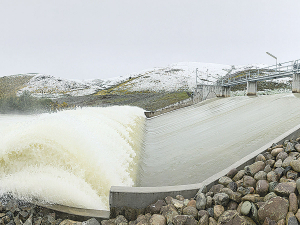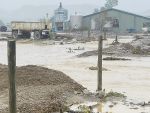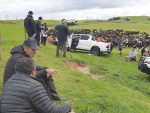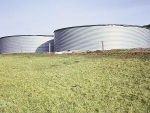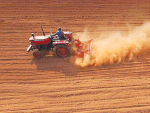Recent high rainfall events in South Canterbury have highlighted the role the Opuha Dam plays in managing floods.
Opuha Water Ltd (OWL) chief executive Andrew Mockford says that with climate change contributing to more frequent flood events of greater severity, the role the dam plays in helping hold back flood water from the upper Opuha/ Opihi catchment has come into focus.
“A key driver behind the building of the dam was to ensure the lower reaches of the Opihi River didn’t dry up,” Mockford says.
“The 1980s droughts were a catalyst in bringing this asset to life.”
The Opihi River has not gone dry since the dam was completed, despite some very dry years from 2014 to 2016. The dam provides this water during drier periods because it buffers (holds back) flood flows during the wetter periods, storing the water in Lake Opuha to keep water flowing in the drier months.
“But this same ability to hold back water can also be used to buffer heavy rain falling in the catchment during flood events,” he says.
Mockford says flood buffering is an incredibly valuable tool for managing floods to mitigate the damage they can cause. Lake Opuha is managed throughout the year to keep its level at the optimum height for water supply surety during dry periods, but OWL also lowers the lake when flood-level rainfall is predicted. This means more flood water can be stored in the lake and held back from the rivers.
“This is a real balancing act for OWL and with climate change causing greater weather unpredictability, the job of managing lake levels is even more challenging.”
OWL liaises closely with ECan flood controllers and Timaru District Council (TDC) civil defence and emergency management before and during high rainfall events.
“Planning can occur up to a week before rain actually falls and, if necessary, the dam will start to release more water into the river early, to make room for flood flows into the lake," he says.
“This reduces the potential impact of predicted floods in the catchment.
“This flood buffering ability came to the fore during the last four weeks when we experienced large rainfalls from nor-west rain spill-over weather events. While the lake was at 84 percent capacity on 7 July, we were still able to absorb the impact of between 300 to 400mm of rainfall in the lake catchment over those four weeks. At one stage there were 230 cubic metres of water per second (cumecs) flowing into the lake while we were releasing only 27 cumecs.”
Mockford says it is important to note that the operation of the Opuha Dam cannot guarantee there will be no catastrophic floods in the lower Opihi catchment, partly because some of the large tributaries to the Opihi River come in below the dam.
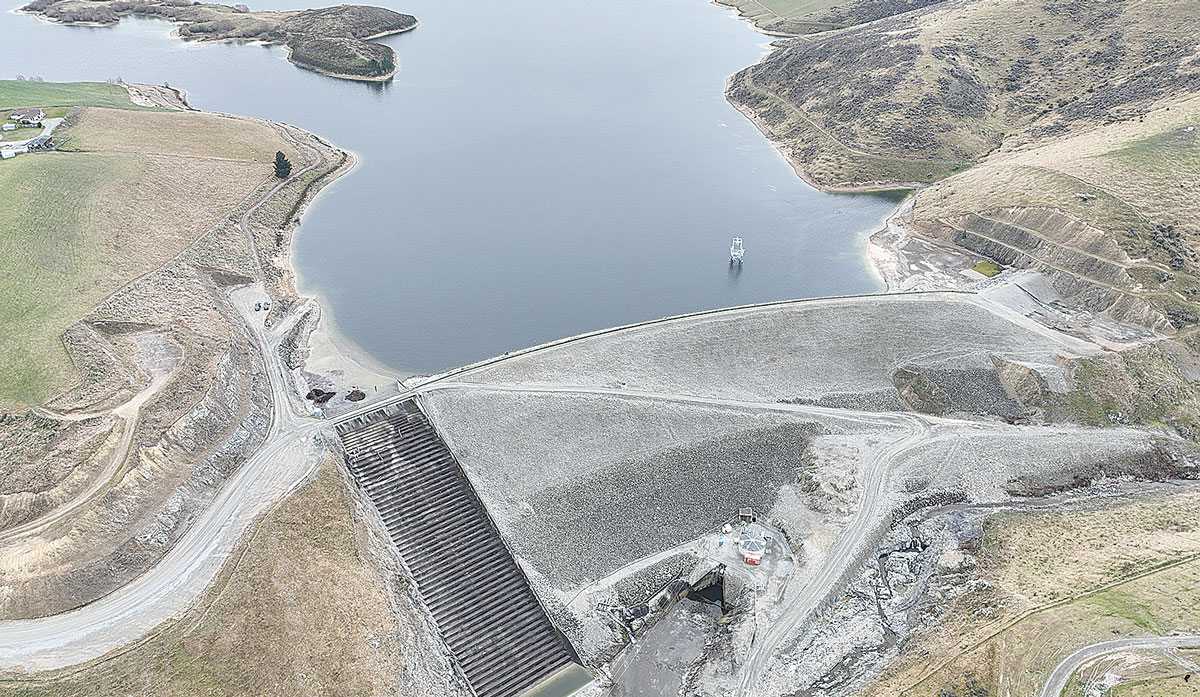 |
|---|
|
An aerial view of Opuha Dam. Photo Credit: Opuha Water Ltd
|
But the lake level at the time of a serious rainfall event is also an important factor. “The fuller the lake is, the less flood buffering it can effectively do.”
Work is underway to further enhance the Opuha Dam’s ability to reduce lake levels prior to a predicted major rain event.
This work, which will nearly double the dam’s capacity to release water, will provide OWL more ability to proactively manage large rainfall events, and therefore hopefully reduce the damages incurred by the community.
Buffering Role
Another example of the Opuha Dam playing a significant flood buffering role was during the severe flooding of late May-early June of 2021.
Parts of South Canterbury were hit by an ‘atmospheric river’ bringing incredibly high rainfall.
At the time, the lake was only 15% capacity. When the rain hit, the lake rose by 11.84 metres in 48 hours, capturing 43 million cubic metres of water (1 cubic metre of water is 1,000 litres).
At the peak of the event the lake had inflows of 440 cumecs but was only discharging approximately 14 cumecs into the Opuha River system. On the 31 May 2021, the Opihi River, as measured at Saleyards Bridge (by Pleasant Point) the flow in the river reached around 800 cubic metres per second; the flow as measured at the State Highway 1 bridge further downstream was higher again, with substantial flows backing up the Temuka River system.
Had the Opuha Dam not held back the high flows from its catchment, the lower reaches of the Opihi River system would have been higher again with likely substantial more community damage.





